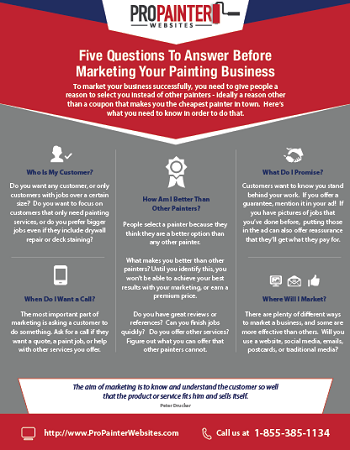Find Out About The Ways In Which Seasonal Variables Can Impact The Success Of Industrial Exterior Painting And Figure Out The Best Times To Attain Long Lasting Results For Your Job
Find Out About The Ways In Which Seasonal Variables Can Impact The Success Of Industrial Exterior Painting And Figure Out The Best Times To Attain Long Lasting Results For Your Job
Blog Article
Writer-Carlson Whalen
When you're preparing a commercial external painting project, seasonal aspects can make or damage your results. You'll intend to consider just how temperature level and humidity effect paint application and drying times. Picking the appropriate period can guarantee your paint sticks correctly and lasts much longer. Yet which seasons are absolutely the very best for this sort of job? Let's check out the key elements that can affect your project's success.
The Effect of Temperature on Paint Application
When you're planning a commercial exterior paint project, the temperature level can dramatically affect just how well the paint sticks and dries out.
Preferably, you intend to paint when temperature levels vary in between 50 ° F and 85 ° F. If mouse click the next site 's also cool, the paint might not treat appropriately, causing concerns like peeling off or breaking.
On mobile home paint exterior , if it's also hot, the paint can dry out as well quickly, protecting against proper bond and leading to an irregular finish.
You need to additionally take into consideration the moment of day; morning or late afternoon supplies cooler temperatures, which can be extra beneficial.
Constantly check the manufacturer's recommendations for the certain paint you're utilizing, as they typically provide support on the excellent temperature array for optimal results.
Humidity and Its Effect on Drying Times
Temperature isn't the only environmental variable that influences your commercial outside paint project; humidity plays a substantial role too. High humidity degrees can reduce drying times drastically, affecting the overall high quality of your paint task.
When the air is saturated with wetness, the paint takes longer to heal, which can result in issues like inadequate adhesion and a greater risk of mold development. If you're repainting on an especially damp day, be planned for extended wait times in between layers.
It's essential to monitor regional climate condition and plan accordingly. Preferably, aim for humidity degrees in between 40% and 70% for optimum drying out.
Maintaining these factors in mind guarantees your project remains on track and supplies a long-term surface.
Best Seasons for Commercial Exterior Painting Projects
What's the best time of year for your industrial outside painting tasks?
Spring and early fall are commonly your best options. Throughout these periods, temperatures are mild, and moisture levels are usually reduced, developing excellent problems for paint application and drying.
Prevent summer's intense heat, which can create paint to completely dry also promptly, leading to bad adhesion and finish. Likewise, winter season's cool temperatures can impede proper drying out and treating, risking the durability of your paint task.
Aim for days with temperatures in between 50 ° F and 85 ° F for ideal outcomes. Bear in mind to inspect the neighborhood weather forecast for rain, as damp problems can ruin your job.
Preparation around these factors guarantees your paint job runs smoothly and lasts much longer.
Conclusion
In conclusion, planning your industrial external painting projects around seasonal considerations can make a significant distinction in the result. By scheduling job during the excellent temperature levels and humidity levels, you'll ensure much better adhesion and drying times. Keep in mind to watch on neighborhood weather forecasts and select the right time of year-- springtime and very early autumn are your best options. Taking these steps will certainly aid you achieve a sturdy and expert coating that lasts.
